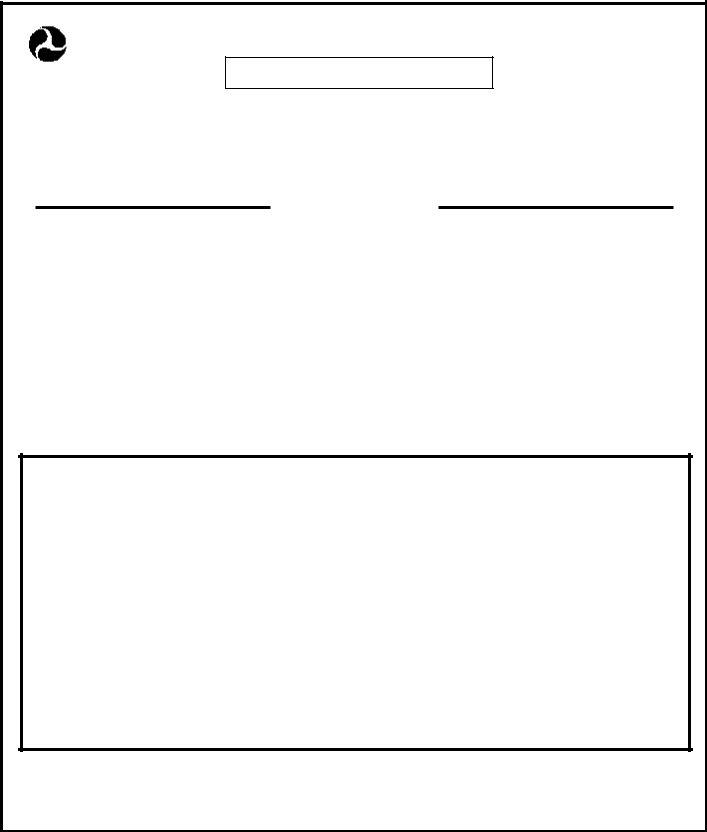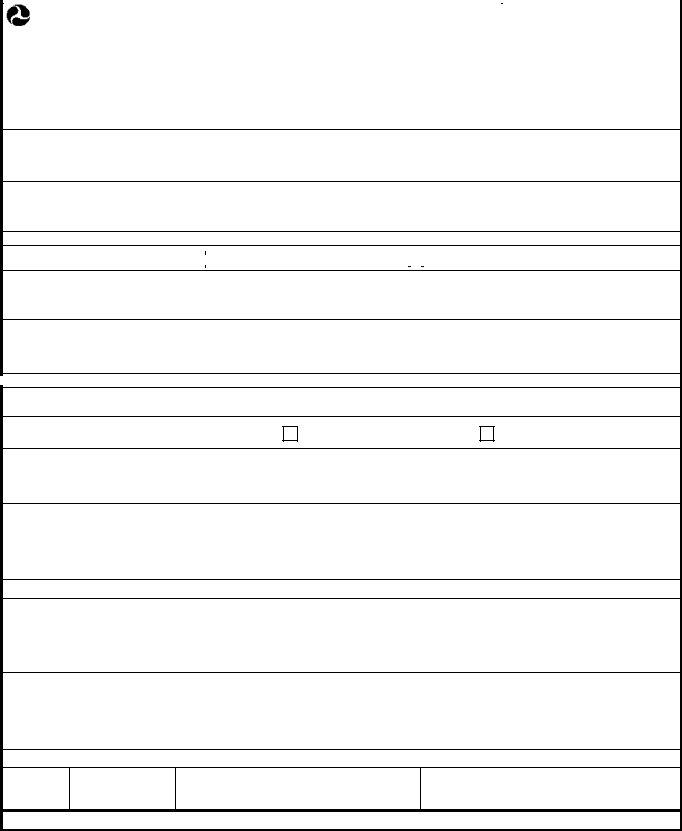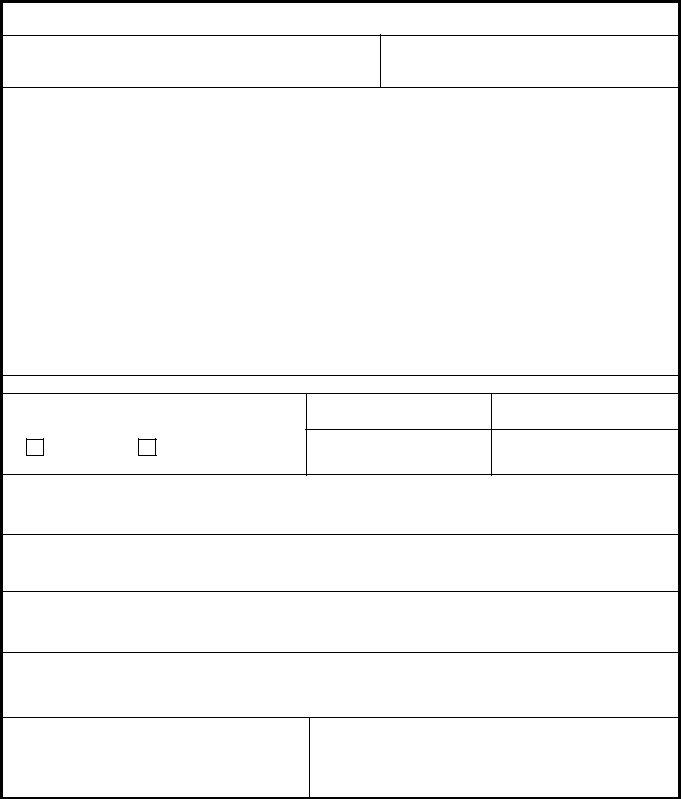Using PDF documents online is always a breeze with this PDF tool. Anyone can fill in 850014 here painlessly. Our development team is ceaselessly working to expand the tool and help it become even easier for clients with its multiple functions. Take advantage of the current modern prospects, and discover a myriad of emerging experiences! With a few simple steps, you are able to start your PDF journey:
Step 1: Access the PDF doc inside our tool by clicking on the "Get Form Button" above on this page.
Step 2: With this advanced PDF editor, you could accomplish more than simply fill in blank form fields. Express yourself and make your forms seem faultless with customized textual content put in, or optimize the file's original content to perfection - all comes with the capability to insert any graphics and sign it off.
It is actually straightforward to finish the document with our detailed tutorial! Here is what you should do:
1. To begin with, when filling in the 850014, start out with the section containing next fields:
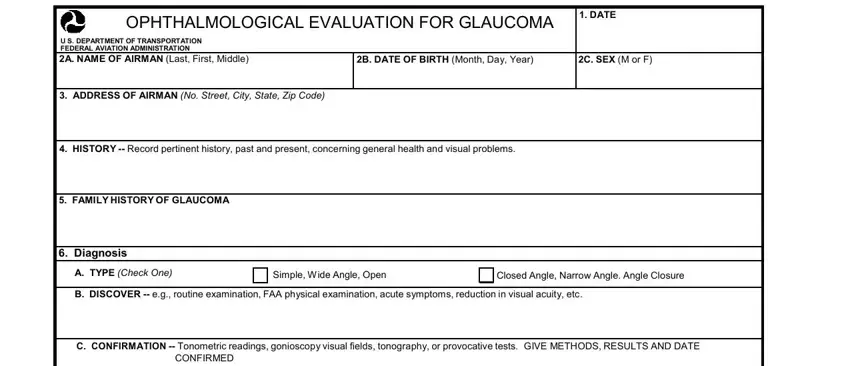
2. The subsequent stage is usually to submit these particular blank fields: SURGERY, A IF SURGERY HAS BEEN PERFORMED, B IS SURGERY ANTICIPATED WITHIN, YES PROBABLE, NO NOT LIKELY, INITIAL RESPONSE TO THERAPY, PRESENT TREATMENT Indicate exact, ADEQUACY OF CONTROL, A DESCRIBE PRIOR CONTROL INCLUDING, B MAXIMUM INTRAOCULAR PRESSURES IN, C INTRACOCULAR PRESSURE, TEST METHOD USED, TIME SINCE LAST MEDICATION, and NOTE Pressures should NOT be.
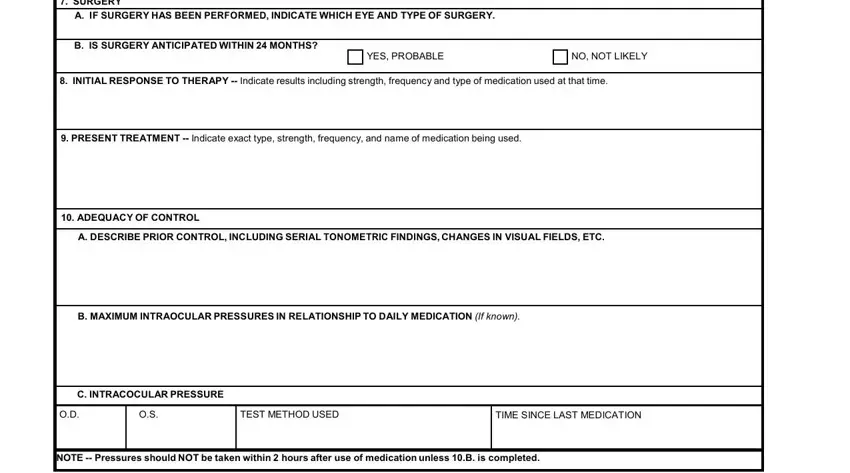
3. In this step, examine A DID EXAMINEE WEAR GLASSES OR, B SIZE OF TEST OBJECT USED WITH, TEST Specify which, SCREEN, VISUAL ACUITY Record Use Snellen, A DISTANT, B NEAR, C INTERMEDIATE, INCHES, TEST METHOD USED, UNCORRECTED, CORRECTED, O D, O U, and O D. These will need to be completed with highest accuracy.

4. To move forward, this next section will require completing a couple of blanks. These include GLASSES, CONTACT LENSES, PUPILS Statement of relative, process healed or active, OPHTHALMOSCOPIC D escribe any, disease process healed or active, SLIT LAMP Record results of slit, FUSION Estimate fusion ability, A TYPED NAME AND ADDRESS OF EYE, B SIGNATURE OF EYE SPECIALIST, FAA FORM Supersedes Previous, NSN, and Page, which you'll find key to carrying on with this particular document.
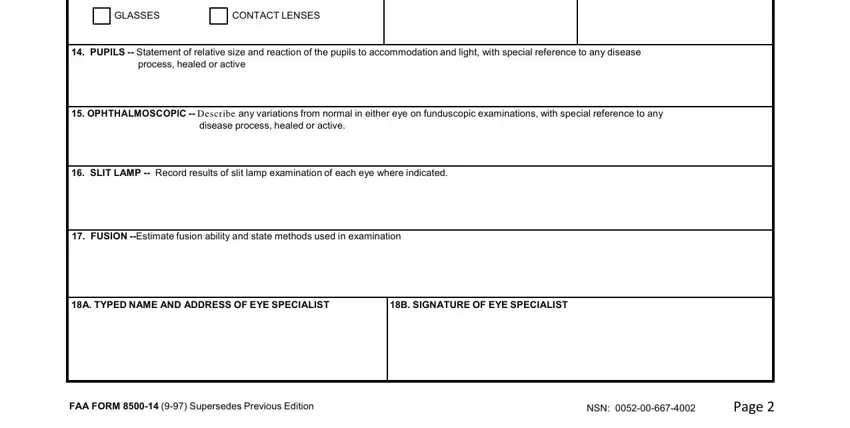
Those who use this form frequently make some mistakes when filling in SLIT LAMP Record results of slit in this area. Ensure that you double-check whatever you enter here.
Step 3: Prior to getting to the next stage, ensure that blank fields are filled out the proper way. Once you are satisfied with it, click on “Done." After getting a7-day free trial account with us, you'll be able to download 850014 or send it via email promptly. The document will also be available through your personal account with your modifications. With FormsPal, you're able to fill out forms without worrying about personal data breaches or data entries getting distributed. Our protected platform makes sure that your private details are stored safely.

